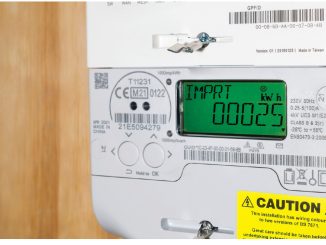Smart meters, with their bidirectional real-time monitoring capabilities, can provide valuable granular insights into consumption levels to both discoms and consumers. Smart meter architecture, capable of bidirectional informational flow in real time, also empowers discoms to introduce novel methods of billing and collection.
There are various types of smart meter communication technologies, characterised by variations in their operation, features and cost, which determine their suitability. These include cellular, radio frequency (RF) mesh, Wi-Fi, power-line communication (PLC), LoRa and narrow-band internet of things (NB-IOT).
NB-IoT: NB-IoT uses a subset of the long-term evolution standard, but limits the bandwidth to a single narrow-band of 200 kHz. NB-IoT focuses specifically on indoor coverage, low cost, long battery life and high connection density. NB-IoT offers flexible deployment and maintenance-free infrastructure. It is a new and cost-effective technology in the 4G and 5G spectrum, with fast deployment quality. With this technology, the interference and obstruction arising due to public network congestion will not hamper the performance of smart meters, as data will flow smoothly through a dedicated channel. Experts favour NB-IoT, because it is scalable and intermeshes with demand management systems while simultaneously relaying information reliably and frequently without any issue.
Tata Power Delhi Distribution has been a pioneer in the deployment of NB-IoT technology for smart meters in India. Its NB-IoT-based smart meter deployment in Delhi is the first of its kind in the country. The technology integration was done with the involvement of meter manufacturers and Reliance Jio’s NB-IoT service.
RF mesh: RF mesh, a wireless technology, is the most commonly used communication tech for smart meters in the country. It provides reliable, scalable and constant flow of data.
This technology has no running cost, making it economical for utilities in long run. The only expenditure is the one-time canopy installation cost, which may be recovered within a few years of operation. The best part of this technology is that the data transmission range can be increased by making the signal “hop” over the modems/frequencies to reach the target destination. For effective hopping, overlapping of the range of each radio frequency is very important. This can be taken care of when designing a network RF canopy.
Another reason to choose RF mesh-based meters is the fact that they can be recovered even if they are stolen, mitigating financial losses. Furthermore, system interference and anomalies are easy to detect and identify in real time. Its low-power connectivity allows for low cost and energy-efficient operations.
On the flip side, one of the key challenges in the deployment of RF mesh communication technology is the reduction in range when the line of sight of the modem/radio is not clear, as the signals do not penetrate through concrete structures. To mitigate this, repeaters and high-gain antennae need to be installed in accordance with the network topology and the geological positioning of the modems.
PLC meters: PLC technology uses electrical wiring to simultaneously transmit both data and electrical power without any interference, as they are at different frequencies. This provides the benefit of being able to utilise the existing widespread infrastructure and not having to lay dedicated cables. The limitations of the technology include slow data transfer, interruption during operation of switches, disconnections in the electrical system and distortion of signals when passing through power transformers and inductors. However, depending on the network strength and site feasibility, PLC may be used in the smart metering of apartments and colonies where the system is robust and data can be collected at the central server.
Wi-Fi-based meters: Wi-Fi-based smart meters communicate directly with discoms. However, they possess security issues and vulnerabilities in their current iteration. Therefore, there is a dearth of confidence in them, and concerns have been raised over their mass deployment. According to several pilot studies, Wi-Fi meters are quite vulnerable to exploitation of data.
Cellular meters: Cellular meters do not provide data on a day-to-day basis, but they are more useful for scattered deployment. However, the availability of network, considering that a lot of it still works on 2G, is not very good.
Net-net, communication technologies for smart meters have evolved significantly over the years, and now utilities have a number for options to choose from. For best results, it is essential to adopt the best-suited technology based on cost-benefits analysis and geographical conditions, among other factors.



